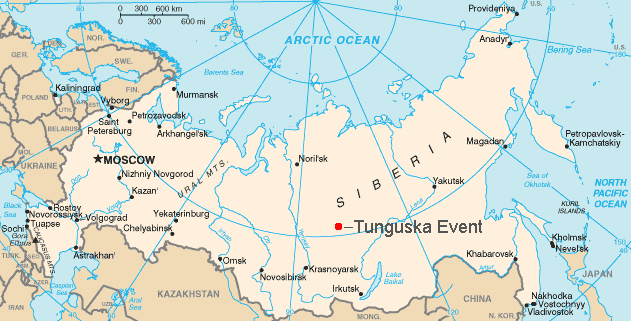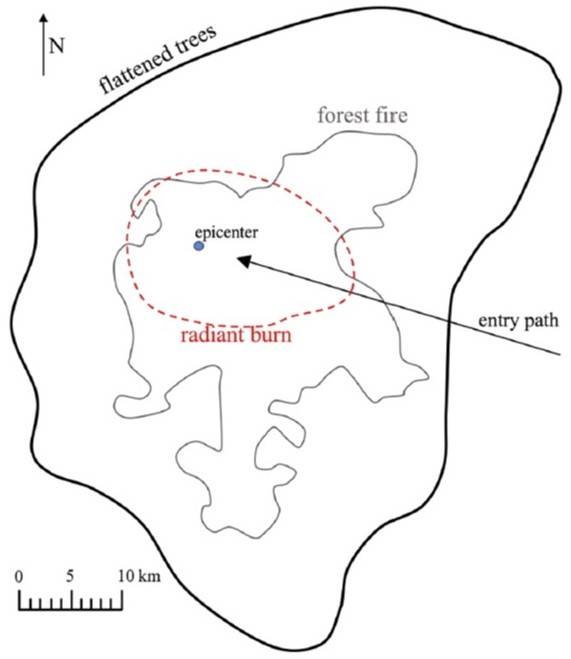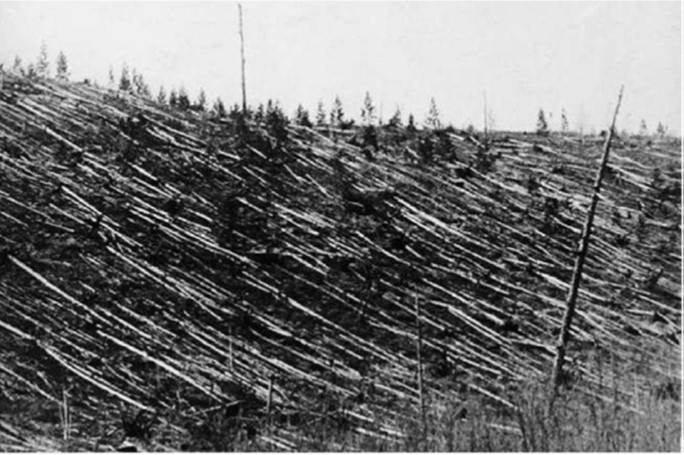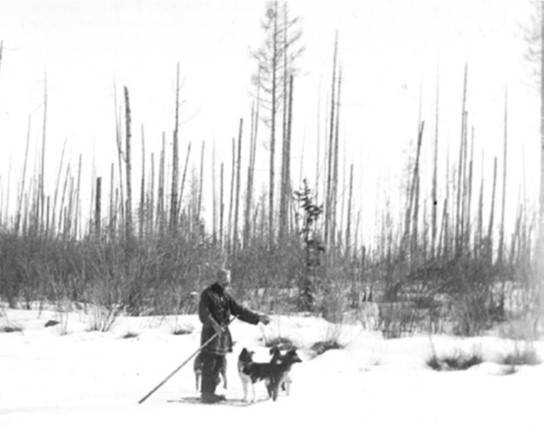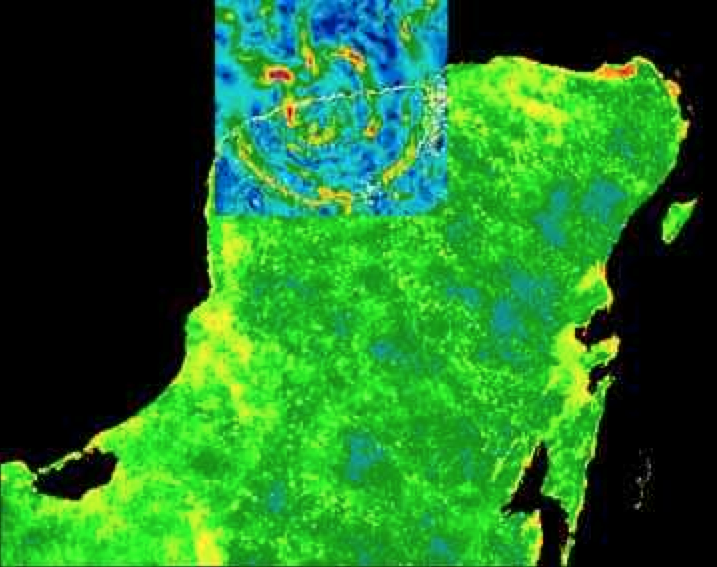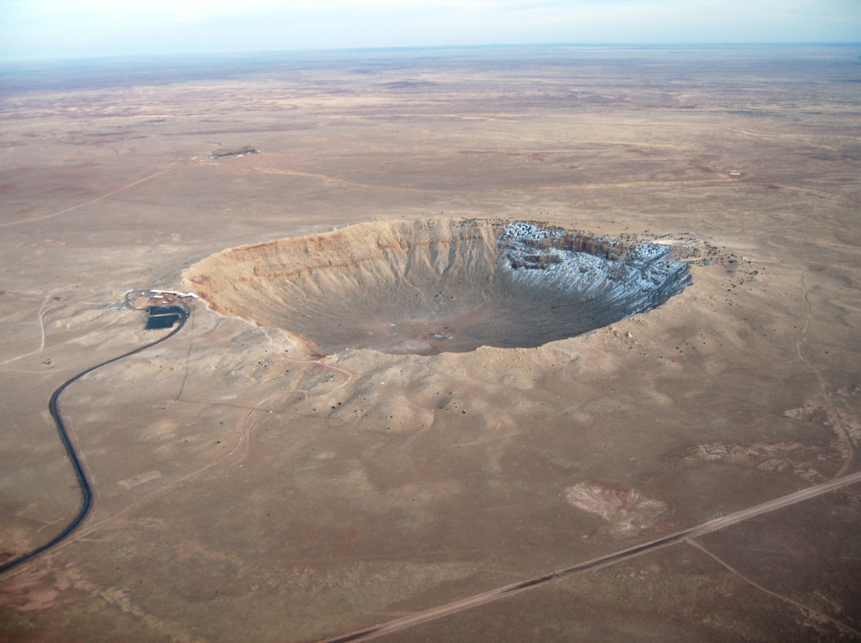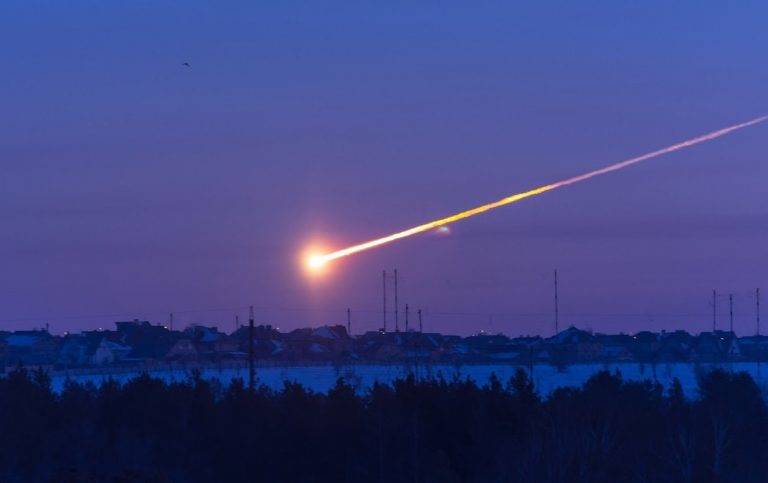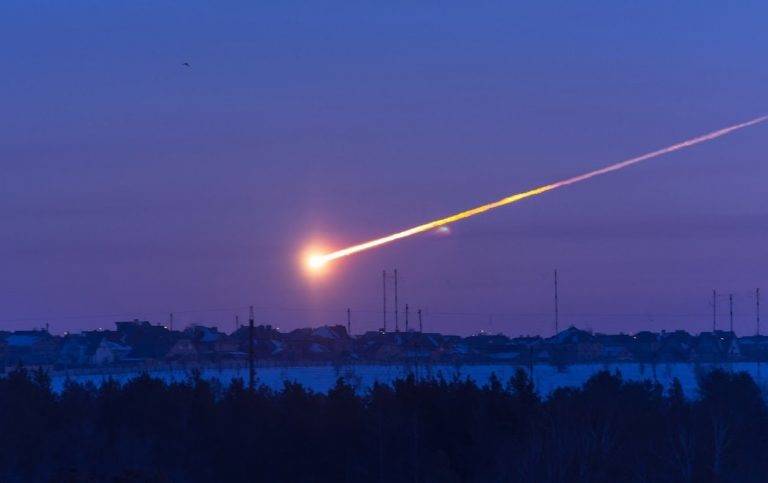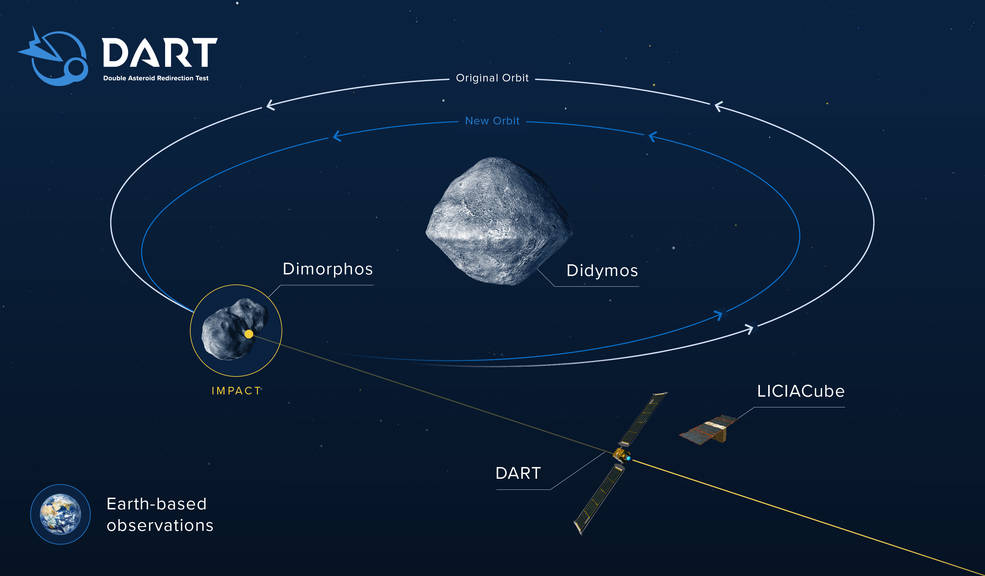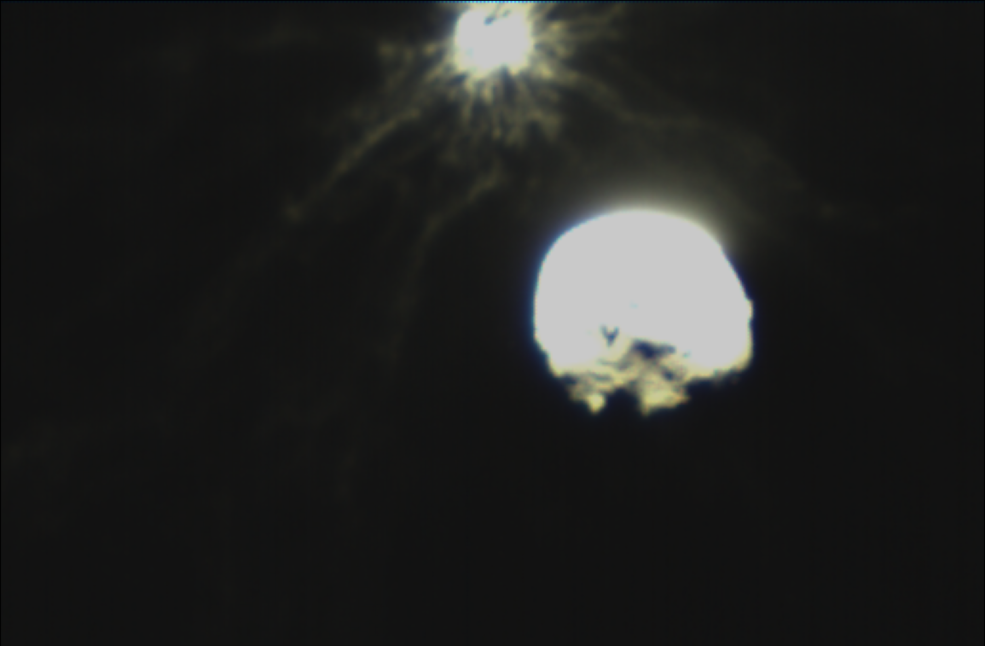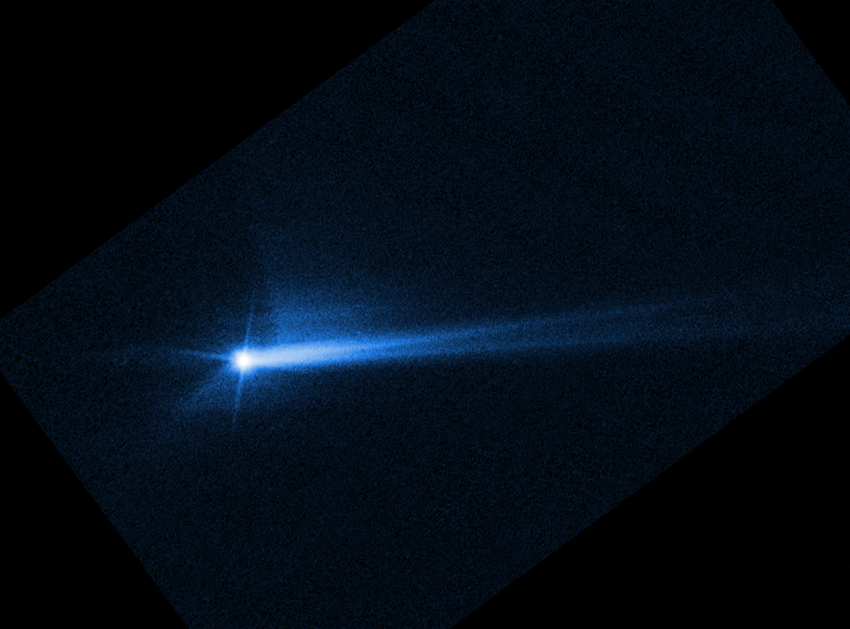On June 30, 1908, an asteroid plunged into Earth’s atmosphere and exploded in the skies over Siberia. Local eyewitnesses in the sparsely populated region reported seeing a fireball and hearing a large explosion. They also reported massive forest fires, and trees blown over for miles. Because of the remoteness of the site, the event garnered little attention even within Tsarist Russia and much less outside. The first scientific expedition did not reach the area until 1927, but still found ample evidence of the asteroid’s destruction caused by the shock wave and heat blast from the aerial explosion. Archaeologists have found evidence of similar events in the past, and smaller asteroids regularly break up in the atmosphere causing little or no damage. NASA established the Planetary Defense Coordination Office and during the DART mission tested the technology to redirect a small asteroid should one pose a danger to Earth in the future.
At about 7:15 am local time on June 30, 1908, when Tsar Nicholas II ruled Russia, in one of the remotest areas of Siberia, a most unusual event occurred. The few reindeer herders of the local Evenki people who witnessed the event, none from closer than 20 miles away, described seeing a fireball trailing smoke, then a flash brighter than the Sun, followed by a loud noise like thunder. Those closest to the event reported being blown into the air and knocked unconscious, and their dwellings damaged or destroyed. Fortunately, because of the low population density, very few human casualties resulted, but many herds of reindeer perished. Further afield, eyewitnesses reported seeing a large column of smoke rising high into the atmosphere. The asteroid, called a bolide once in the Earth’s atmosphere, with an estimated diameter of 130 feet, had an entry angle of about 30 degrees based on the trail it left in the sky, and exploded at an altitude of about 6 miles. The resultant shock wave and heat blast most likely correlate with the eyewitness reports and with the destruction described by later expeditions. Seismic instruments in Russia hundreds of miles from the site recorded the tremors caused by the shock wave.
No scientific expeditions to the Tunguska site took place for nearly 20 years, partly due to its remote location and partly due to distractions such as World War I, the Russian Revolution, and the ensuing civil war. The Soviet Academy of Sciences first sent geologist Leonid A. Kulik on an expedition to the site in 1921, but the area proved so inaccessible that he could not reach it. Not until 1927 did Kulik succeed in reaching his goal. Even though 19 years had passed, the area still bore unmistakable signs of the explosion. In his observations on this and three subsequent expeditions, Kulik described a butterfly-shaped area of destruction of 830 square miles with an estimated 80 million trees knocked over. Near the epicenter, trees remained standing but with broken branches and stripped of bark, with evidence of burning. Although Kulik sought and failed to find physical evidence of the bolide, most likely due to the mid-air explosion vaporizing the object, later expeditions did find microparticles indicating an extra-terrestrial origin, although not specific enough to determine if the object was an asteroid or a comet. Most scientists today believe it was an asteroid that rained destruction on Siberia on that June day in 1908. In 2016, the United Nations proclaimed June 30 as International Asteroid Day to raise awareness about asteroids and efforts at planetary defense.
The Earth bears geologic evidence of past cosmic impacts. Although not as abundant as on celestial bodies with little or no atmosphere, some of the terrestrial ones involved catastrophic results. In 1990, geologists identified the partially-submerged 125-mile-wide Chixculub Crater in Mexico’s Yucatan Peninsula as the likely impact site of the 6-mile-wide asteroid that 65 million years ago caused the extinction of not only the dinosaurs but 75 percent of Earth’s species. Tourists can visit the site of a more recent cosmic impact, Meteor Crater near Winslow, Arizona, a nearly-mile-wide crater caused by the impact of a 165-foot-wide asteroid about 50,000 years ago. The archeological record shows evidence of more recent cosmic events that caused damage to inhabited areas. Evidence such as unique molten glass in sediments at the 12,800-year-old Abu Hureyra habitation site in Syria indicates a possible cometary impact, and with effects not limited to that local area. Archeologists have found similar materials in soil layers in other parts of the world dating to the same time, scientists believe the comet may have disintegrated prior to impact, resulting in global effects. This cometary impact event may have contributed to the Younger Dryas, a sudden temporary cooling of Earth’s climate, and is possibly implicated in the global extinction of some large mammalian species. Scientists have found compelling evidence that Tall el-Hamman, a city in what is now Jordan, flourished for 3,000 years before a cataclysmic event around 1,650 B.C.E. devastated it. Evidence points to an airburst asteroid impact somewhat larger than the Tunguska event as the most likely cause of the devastation. The area remained unoccupied for 300 to 600 years after the event, possibly due to drastic changes in the soil’s fertility resulting from the impact. Fifteen nearby cities, including Jericho and Tall Nimrin, and more than 100 smaller villages appear to have suffered a similar fate at the same time.
Several events, such as the widely-observed impact of the 23 fragments of Comet Shoemaker-Levy 9 on Jupiter between July 16 and 22 , 1994, and the well-documented air burst of the 66-foot-wide asteroid, releasing energy equivalent to an estimated 150 kilotons of TNT, over Chelyabinsk, Russia, on Feb. 15, 2013, prompted NASA to form a Planetary Defense Coordination Office (PDCO) on Jan. 7, 2016. The PDCO funds efforts to identify Near-Earth Objects (NEOs) that could pose a threat to the planet, and is responsible for sending global warnings should one become a hazard. The PDCO also coordinates global planetary defense efforts and studies technologies to mitigate against NEO impacts with Earth. NASA’s Double Asteroid Redirection Test (DART) mission, managed by the Johns Hopkins Applied Physics Laboratory, demonstrated the planetary defense technique known as kinetic impact. Launched on Nov. 23, 2021, DART consisted of a main spacecraft designed to impact its target asteroid at 14,000 miles per hour to change its trajectory and a CubeSat called LICIACube, provided by the Italian Space Agency, to image the impact and its aftermath after separating from the impactor. NASA chose the binary asteroid system of Didymos, about a half-mile in diameter, and its smaller companion Dimorphos, about 520 feet in diameter, for the encounter. On Sept. 26, 2022, DART impacted Dimorphos, with its camera relaying images of the asteroid until the last second. The LICIACube returned images of the impact and the ejecta plume, also observed by Earth-based telescopes and the Hubble Space Telescope in Earth orbit. The kinetic impact slowed Dimorphos’ orbit around Didymos by 32 minutes, more than 25 times the expected change, and for the first time demonstrated asteroid deflection technology.
NASA’s PDCO continues to search for and monitor NEOs that come within 30 million miles of Earth’s orbit. In the past month, seven have approached to within the orbit of the Moon but passed by without harm. In April 2023, the agency released a strategic plan for planetary defense, outlining the goals of continued observation and vigilance. The recent positive experience with DART shows that technologies exist to mitigate against possible NEO impacts with Earth.
“A collision of a NEO with Earth is the only natural disaster we now know how humanity could completely prevent” said NASA Planetary Defense Officer Lindley Johnson. “We must keep searching for what we know is still out there, and we must continue to research and test Planetary Defense technologies and capabilities that could one day protect our planet’s inhabitants from a devastating event.”
Click here for original story, 115 Years Ago: The Tunguska Asteroid Impact Event
Source: NASA Johnson Space Center
